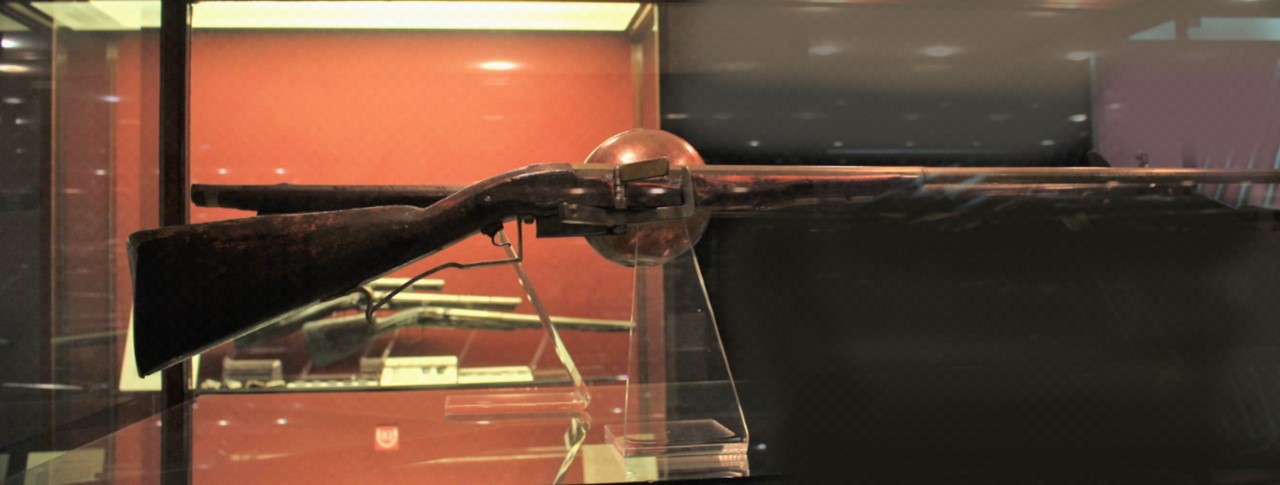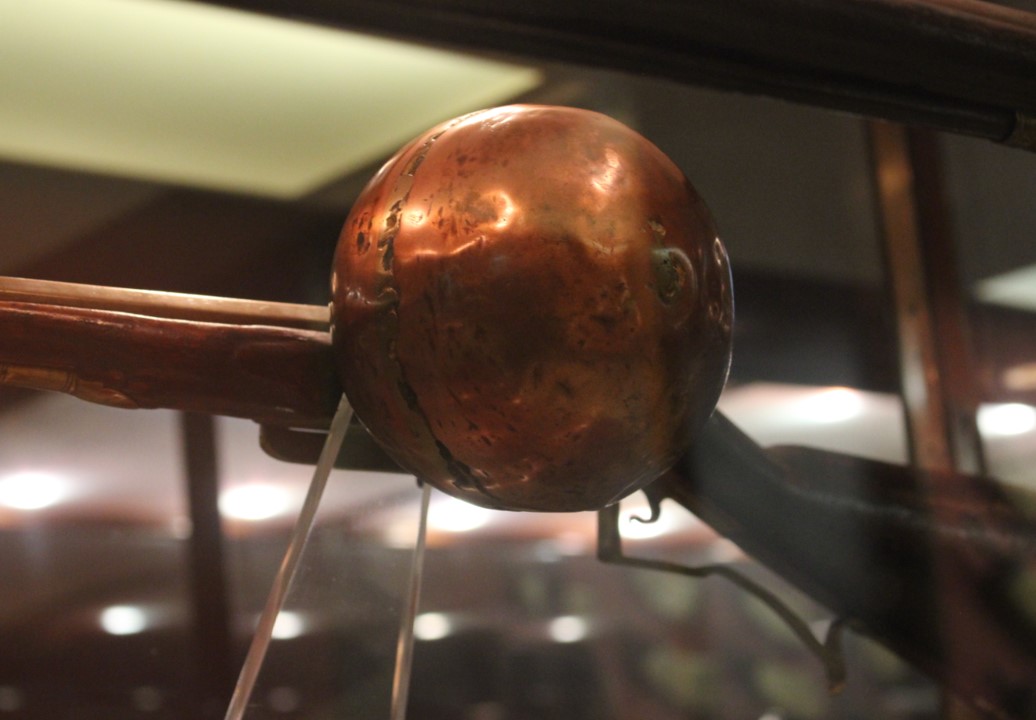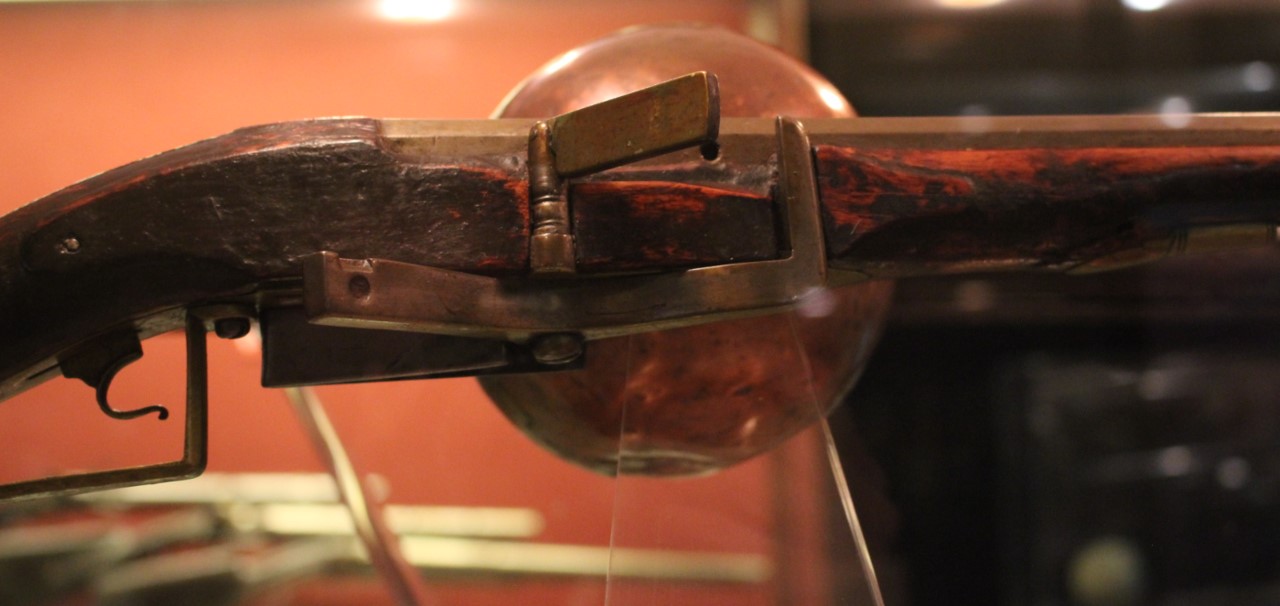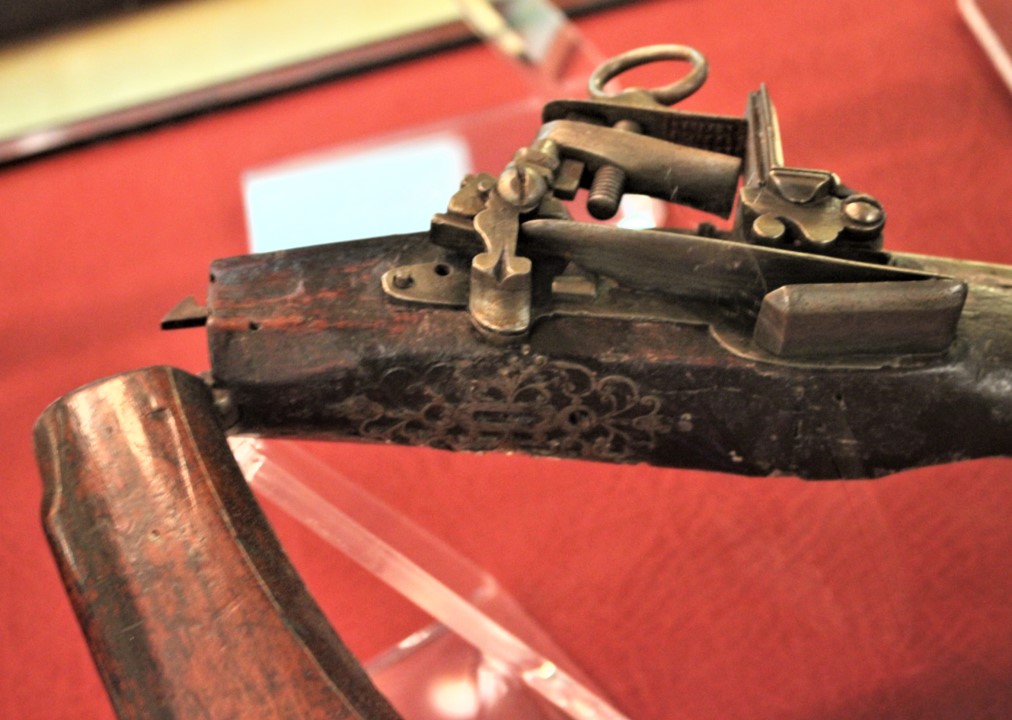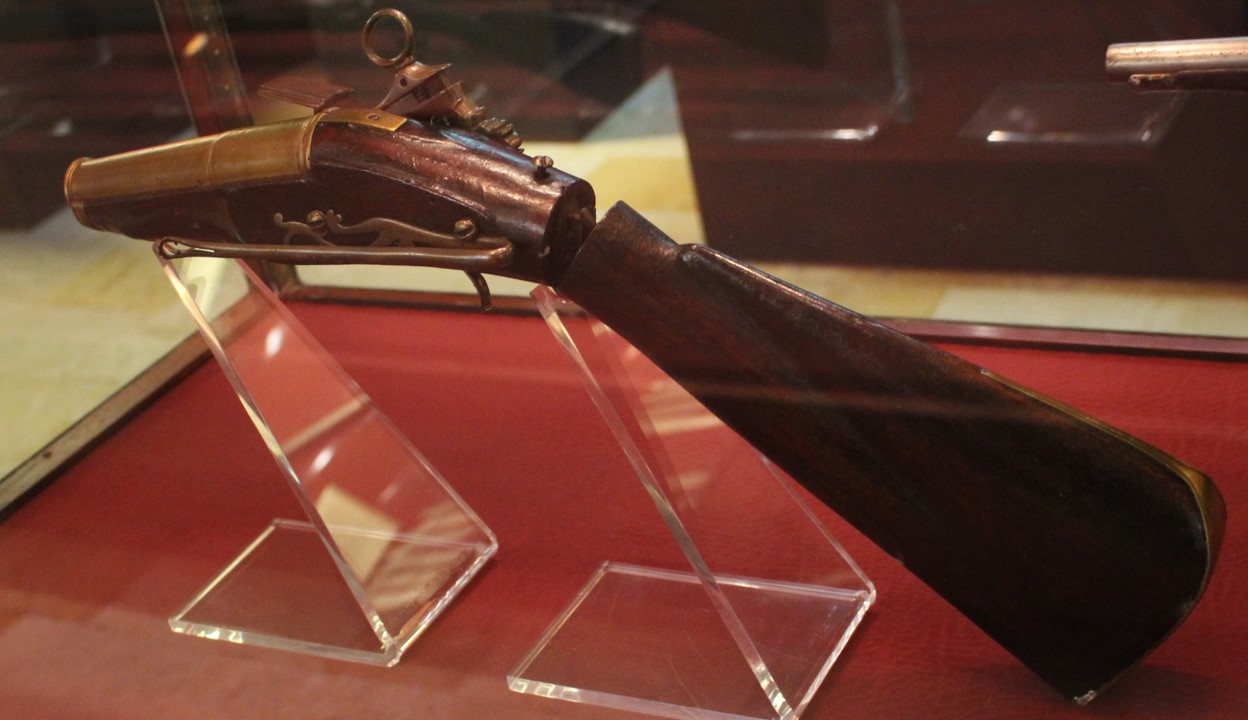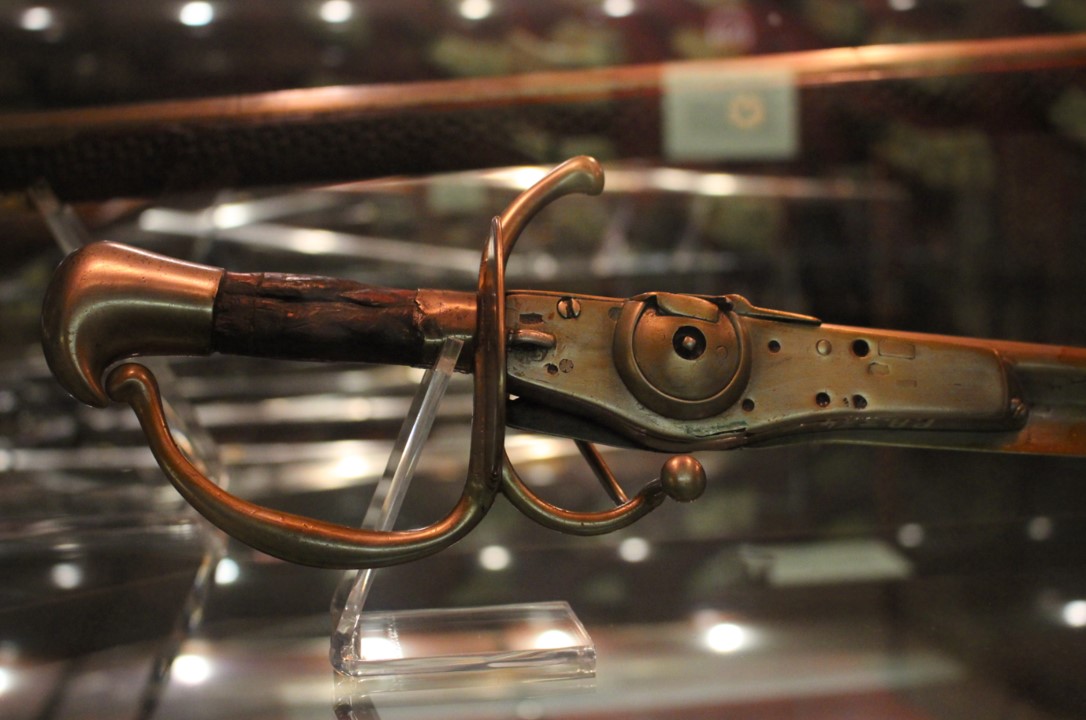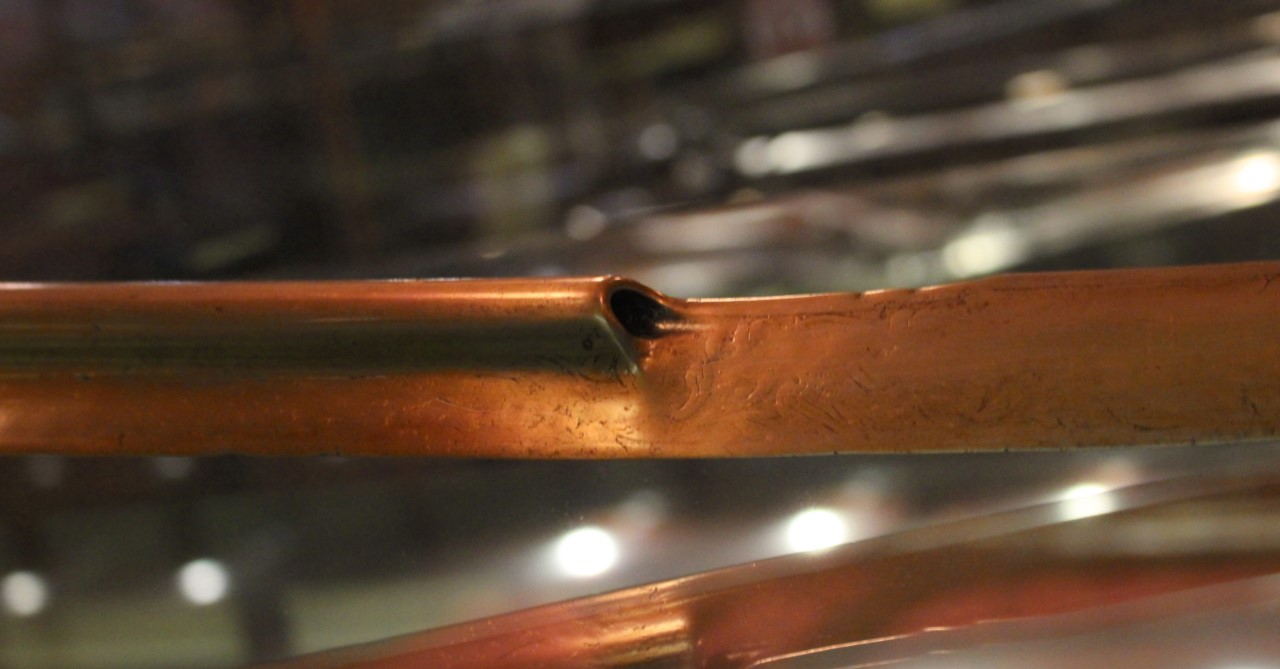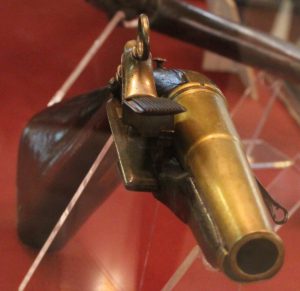 For persons interested in small arms, the 18th century has much to offer. Small arms were common in the army, but also in the everyday life of the rich, be it for sports, hunting or self-defence. Thus, gun-makers produced fascinating pieces for their clients. Find here three unusual small arms with interesting features.
For persons interested in small arms, the 18th century has much to offer. Small arms were common in the army, but also in the everyday life of the rich, be it for sports, hunting or self-defence. Thus, gun-makers produced fascinating pieces for their clients. Find here three unusual small arms with interesting features.
Air Gun
The power of compressed air as a propellant for missiles is used for air guns. The oldest surviving air gun dates from 1644. The advantages of the air gun were that – unlike the matchlock and flintlock muskets – it could be discharged in wet weather and rain, and it discharged much faster than muzzle-loading guns. Being quieter than a firearm of similar caliber, having no muzzle flash, and being smokeless, air guns did not disclose the shooter’s position or obscure the shooter’s view.
Air guns had a metal reservoir attached (sometime the reservoir was located in the butt) that had to be pumped full of air using an air pump. A spring-mechanism (cocked between shots) opened and closed a valve when the trigger was pressed, releasing sufficient air to discharge the projectile. Air guns gave velocities from 200–300 m/s, and discharged about 40 shoots before they had to be replenished with air.
Where was it used?
In the 17th and 18th century, air guns were mainly in use for hunting- and target-shooting. Some special models were used in special sniper detachments by the army, such as France and Austria. The repeating air-rifle by Bartholomäus Girandoni, invented in 1779, was used by the Austrian Army from 1780 – 1816.
Flintlock Folding Gun
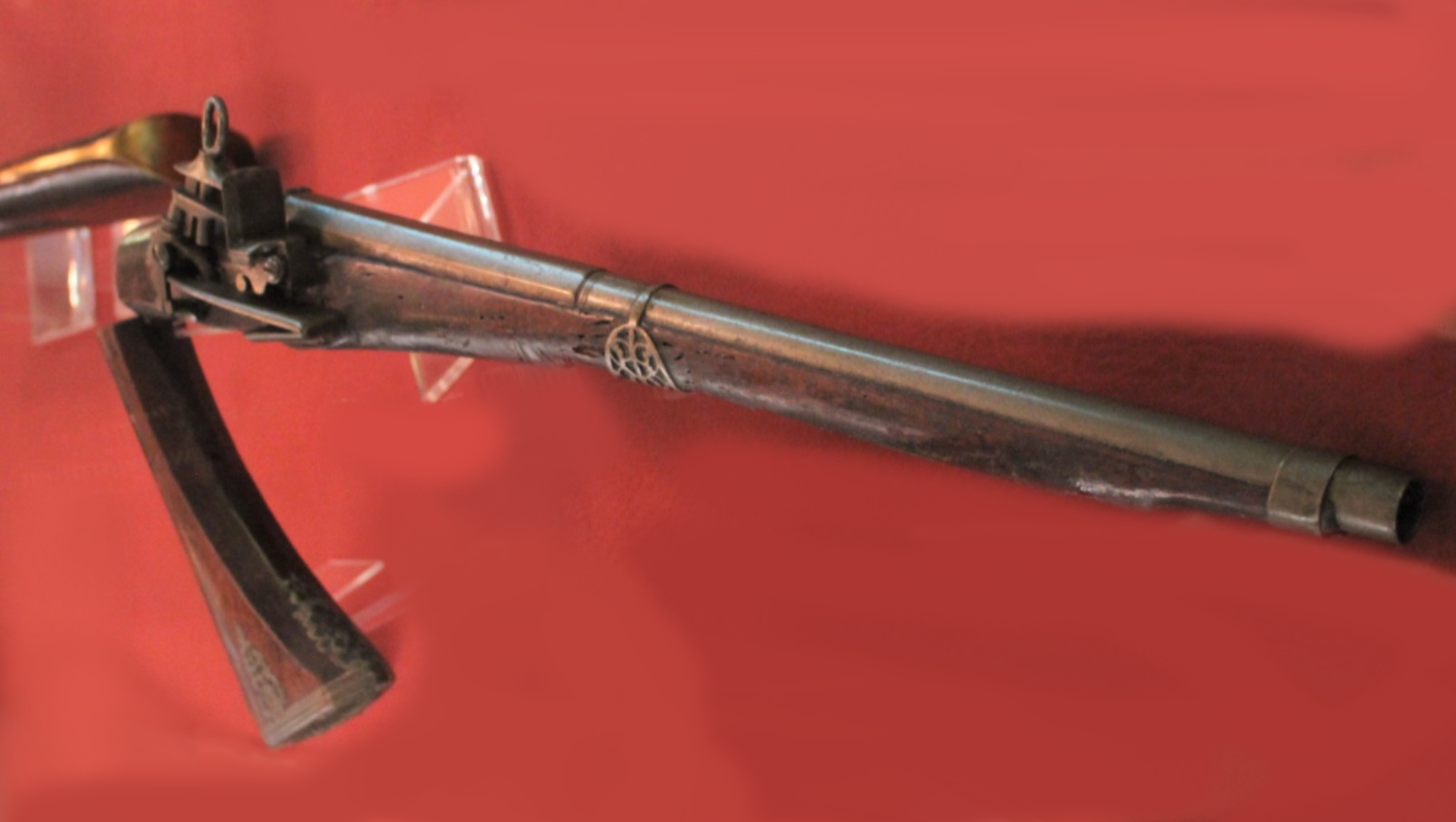 This is a flintlock travelling carbine – also called a coach carbine – from around 1750 (photo above). It was made in Italy. The flintlock has a beautifully ornated folding stock. The butt hinges open. They are held in a locked position by a spring-latch. Press a button-stud on the grip to disengage the latch.
This is a flintlock travelling carbine – also called a coach carbine – from around 1750 (photo above). It was made in Italy. The flintlock has a beautifully ornated folding stock. The butt hinges open. They are held in a locked position by a spring-latch. Press a button-stud on the grip to disengage the latch.
The flintlock (photo above) is a Spanish patilla style miquelet lock, i.e. the mainspring pushes up on the heel of the hammer and both sears engaged the toe of the foot. The mechanism of the miquelet lock was invented in the 16th century. The term miquelet lock was probably coined only in the early 19th century, allegedly by British troops in the Peninsular War to describe the style of a musket used by the miquelet (militia) that had been assigned to the Peninsular Army of the Duke of Wellington.
Where was it used?
The flintlock folding gun was the ‘best friend’ of a traveller in an age when the country roads where infested with highwaymen. With the butt folded, the gun fitted into a traveller’s or coachman’s overcoat or into the compartment under the coachman’s seat.
Sword Gun
The sword gun below is a true combination weapon made around 1550 in Germany. It features a short sword of the hunting type and an in-built wheel lock pistol. A wheel lock is a friction-wheel mechanism to cause a spark for firing a firearm. Wheel lock arms were the first self-igniting firearms.
The pommel of this small arm is shaped as a falcon’s head. The blade is of falchion shape, as typical for one-handed, single-edged swords of European origin. The back of the blade forms the barrel. The wheel lock mechanism is attached at the hilt. For discharging, the trigger is released by a pin on the opposite side of the blade.
Where was it used?
Sword guns and sword pistols were not widely used, as they were expensive and of limited accuracy (they usually were a mix of a heavy pistol and a heavy, off-balance sword). A sword gun would be mainly found with individuals with a taste for eccentric arms. However, edged weapons with built-in pistols were common in parts of the armies of Central and Eastern Europe until the 18th century. Axe pistols, e.g. invented in 1703, were issued to the Swedish navy from the early 18th century until 1840.
Related posts
Your Challenge: Equip the Army with Small-Arms between 1793 and 1815
Attractive, Distinctive, One Size: The Military Uniform in the Late 18th Century
The Battle & the Man: 10 Quirky Facts about Admiral Nelson and Trafalgar
A Brief History of the Napoleonic Wars told … in 10 Hand-held Fans
Burn after Reading: Spying Secrets of the Regency Period – Guest Post by Sue Wilkes
Sources
- The Palace Armoury, Grandmaster’s Palace, Republic Street, Valletta, Malta
- www.wikipedia.com – > Flintlock mechanism
- www.wikipedia.com – > air gun
- www.wikipedia.com – > pistol sword

